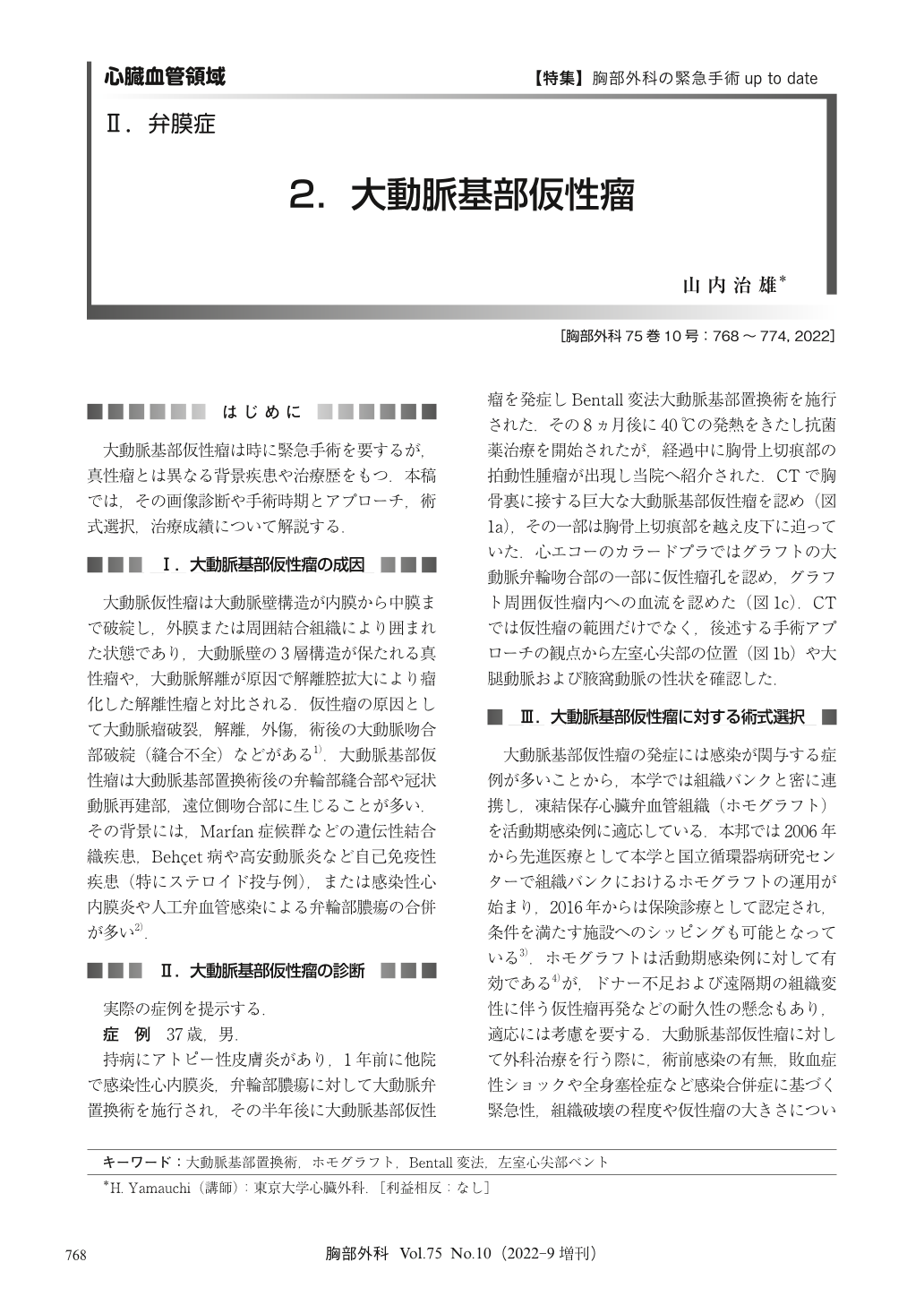Japanese
English
- 有料閲覧
- Abstract 文献概要
- 1ページ目 Look Inside
- 参考文献 Reference
大動脈基部仮性瘤は時に緊急手術を要するが,真性瘤とは異なる背景疾患や治療歴をもつ.本稿では,その画像診断や手術時期とアプローチ,術式選択,治療成績について解説する.
Aortic root pseudoaneurysm is often derived from suture sites after aortic root replacement on the basis of connective tissue disease, aortitis, or prosthetic valve endocarditis. Preoperative computed tomography (CT) and echocardiography are useful not only for diagnosing a pseudoaneurysm but also for planning to repair it. Redo aortic root replacement is necessary to repair it in most cases. When a giant pseudoaneurysm is close to a sternal posterior wall, resternotomy may be challenging. In such a case, precedent cardiopulmonary bypass with left ventricular apical vent under mild-moderate hypothermia is useful to control bleeding during resternotomy. Regarding graft selection, cryopreserved homograft is effective for repairing pseudoaneurysm in an active infectious phase, but modified Bentall procedure may be still considerable to expect long-term durability if infection is well controlled by preoperative sufficient antibiotic treatment and intraoperative debridement. In the author’s institute, 45 patients with aortic root pseudoaneurysm underwent surgical repair since 2011. Thirty cases (67%) was infectious. Thirty-six patients (80%) underwent aortic root replacement, including homograft in 14 patients and modified Bentall procedure in 22 patients. All the patients survived at discharge, and 1-year and 5-year survival were 96.8% and 74.9%, respectively. Preoperative infectious status and graft selection did not significantly affect remote-phase survival.

© Nankodo Co., Ltd., 2022


